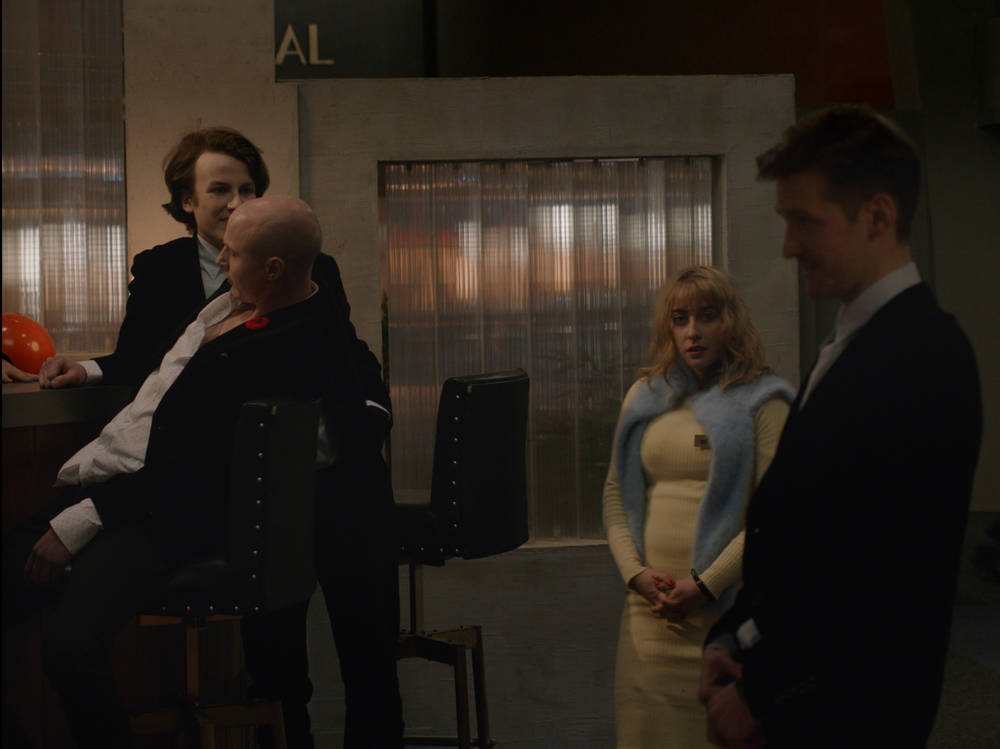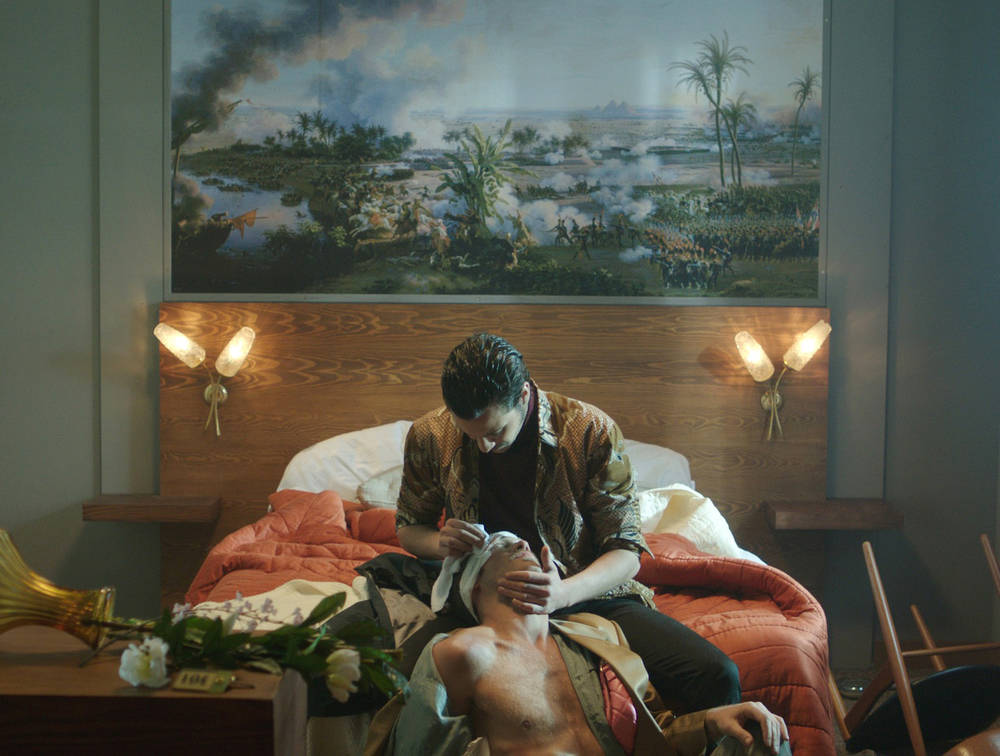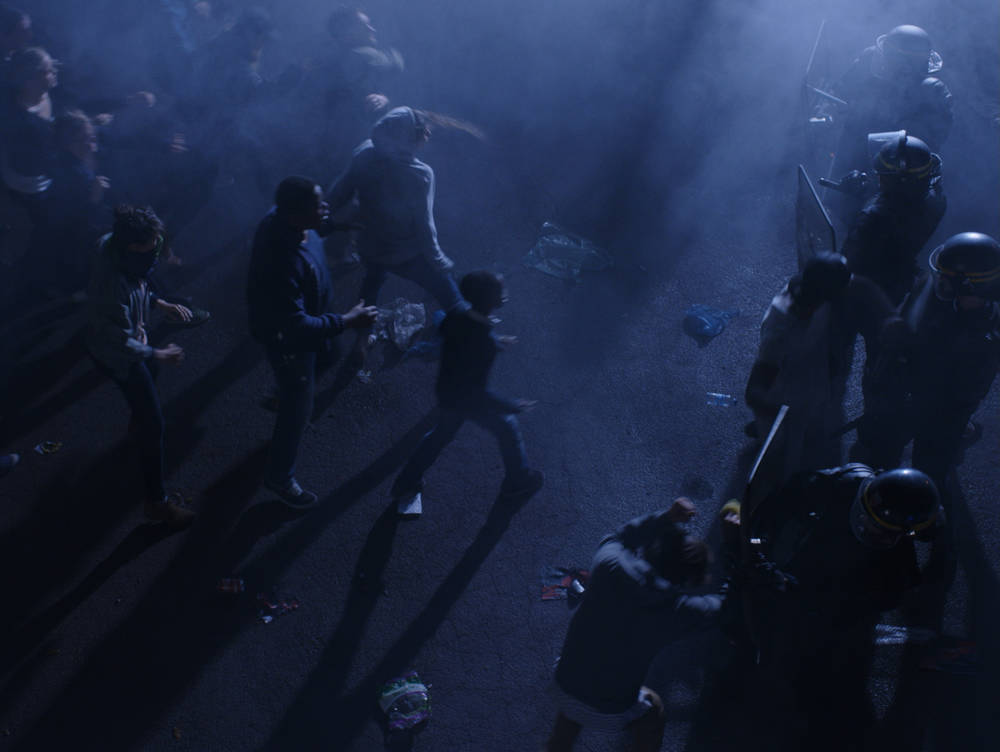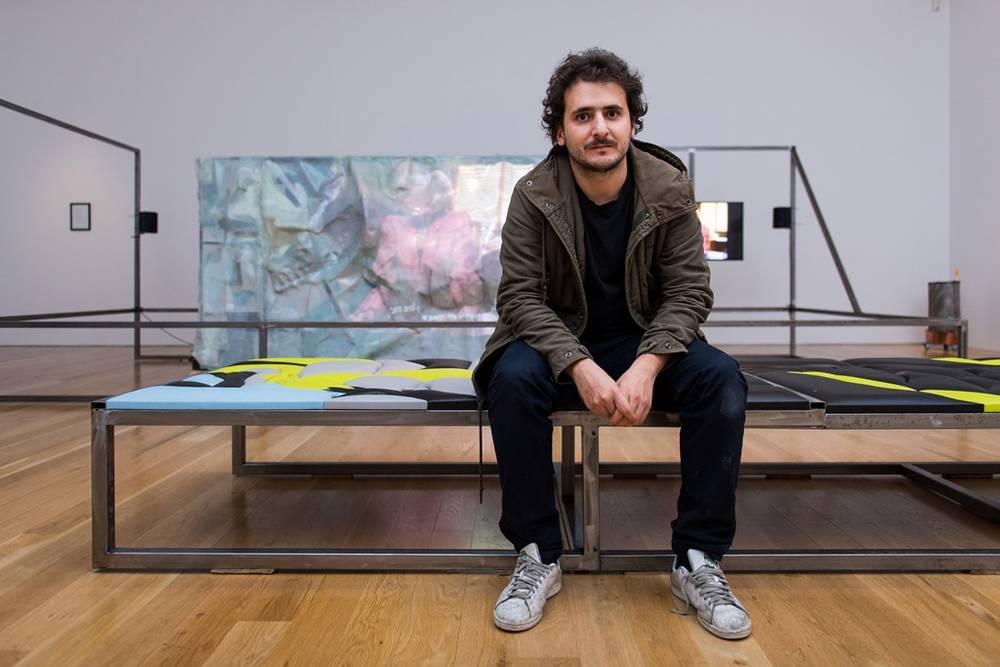In 2017 artist Neil Beloufa presented his movie “Occidental” at the Berlinale, in 2018 it is shown at Le Méridien in Frankfurt. A conversation about the authority of the White Cube and why Beloufa is not interested in the question of veracity.
You’ve presented your first feature film “Occidental” on the 67. Berlinale. How does it fit in your work where the medium film/video plus narratives have always been a big part? Was there a particular difference for you in planning and making this movie compared to your art-films?
The main difference is that we worked for years on the film; it technically needed a way higher level of post-production than any other of my works. We also had to attach a vague narrative to it in order to build a stronger relationship with the audience, but we’ve tried to sustain the distance that we usually keep within the art context.
Your former video works have been part of installations in exhibitions. What is changing having only the moving image left – screened in a cinema instead of the white cube?
My other videos were also presented in theater situations. But yes: I was always trying to avoid a reproduction of a movie theater context in exhibitions. Reproducing a white cube in an art exhibition is an authoritarian act: it means you want people to believe in your film and it's authority, even if they won’t watch the entire thing and rather rely on a written text about it which doesn’t show the films weakness.
Vice versa a cinema is basically a fixed relation, also an authoritarian one where everything that could disrupt the presentation will be on the screen exclusively. This is a convention Iam fine with as long as it is stated. When you go see a movie in a theater you don’t mind being in it, you know you’ll be held hostage and that your judgment should come at the end.
I believe that art is one of the only places that can make people step back and think about authority and I feel it's important not to alter that. Also it's the only place where people are allowed to say “No, I won’t watch this”, and that is important too.

„Occidental“ did not have any financial funding’s, public cinema promotion etc. Was it your explicit decision to finance the production completely on your own, or did you simply not fit in the usual funding patterns?
Both! First of all: I’m really bad at getting funding’s, and considering the budget needed that public money might better be spent in other things. In our neoliberal world, the political position of any work determines where you get the money from and how you could use it.
Also, in my work as an artist I produce things that are paradoxically made to be shown and are rarely just produced for the sake of themselves. When you keep producing for career’s sakes, your art practice starts becoming a reply to other things: demands of commissions or audience, even to its own context. And this is the definition of communication, which in my opinion is supposed to be the enemy of art.
With “Occidental” I wanted to reverse the process: Decide to do something for nothing and take the risk it might end up on my computer. And so the actual challenge was trying to make a kind of a popular object, flirt with the industry without its help – so to say. This included getting out of my comfort zone – even if it’s not totally the case. I also liked the idea back then to state that people who do creative work like artists/writers/filmmakers don’t need the industry or institutional validation to do so. Actually it should be the other way around: I can do art without the existence of a museum but a museum cannot do an art exhibition without the existence of Artists.
In the Q&A after the screening of „Occidental“ at the Berlinale, many people implied a symbolic meaning of specific aesthetics like the 4:3-format, the somewhat cheesy decor of the hotel-setting etc. Your replies contained mostly pragmatic reasons for that. Would you agree that especially in filmmaking the artist has to deal with quite a lot practical limitations?
The difference between an artist compared to a filmmaker is that the artist most of the time is his own producer, therefore I’ve never been in a situation where I can ask whatever and wait for people to make it happen without any constraint. Everything I do is based on my limitations, and most of my choices are linked to the possibilities or opportunities I have. So in that project many decisions were based on our autonomy and our lack of means or experience. Therefor we don’t have any extras in the hotel set because it was too expensive and hard to manage. It was shot on a film set because I know how to build one and because I have a studio. It is also funny of answering those questions the way a sculptor or a craftsman would, because obviously I like film sets, I like to frame 4/3 and I was fine with those constraints.

According to this: One aspect running like a red thread through your work and driven to the top in “Occidental” seems to be the interiors itself. What’s the importance of set-design to yourself and your work, beside its aesthetic qualities?
I like building things; it’s a kid’s dream, to look like an alpha man I guess. Also it’s an easy way to generate your own universe and avoid "reality". A beautiful or exotic place has some kind of authority on us through its appearance or its value in society. So when trying to create one yourself, you try to analyze why this image has power while badly reproducing it.
In your artistic development, you’ve opted quite early a) for film/video as the medium and b) for a quite specific, artificial picture language. How did these preferences develop?
I think video is the medium of mass representation and communication in today’s world. So it makes sense for me and for my idea of the role of an artist in society to use those.
As for artificiality, it is a way for me to never lie about what I do. I don’t believe in "reality" and I don’t want to use its assumed power over people. Also, if artists are only using "natural things" who is going to produce images?
In the Q&A you stated “I don’t like slogans” when the audience asked about the political motifs that occur in “Occidental”. Your work often gets interpreted in a political way, since you deal with a load of political stuff: World leadership, war, protests and terrorism. Are you dealing with the aesthetics of politics – or is the political surface just a gateway to other questions?
My work is political, but it is about representation of politics itself or political systems in general. I obviously have a political agenda as a human being but I try to separate it from the public practice. As an artist I should always say out loud that I know nothing about politics but that I am aware about representation, so it leaves clever people saying clever things about the world.

In “World Domination” the protagonists argue on whom to declare war next, in “Untitled” the house workers contradict each other on what happened in the abandoned villa and in “Occidental” each witness on the street depicts something else, while the protagonists in the hotel permanently talk at cross-purposes: A recurring motif in your film-works seems to be a certain impossibility of communications – or, differently put: the diverging perceptions of each individual, which may then result in some kind of myth-building.
I do believe that most of what people say might be true, even if I disagree and even if it is only true to them. Therefore the question of trueness – which in the western culture is the base of conversation – of e.g. an image or a document (is it real or fake?) doesn’t really interest me. The same goes with the notion of morality (Is it good or bad?). I always try to produce objects that avoid those questions in order to be able to discuss stuff that matters more to me: how something works.
Contemporary movies celebrate the small gesture: tiny, quiet stories, in which people rather react than act, no classical catharsis ala old Hollywood. “Occidental” in the contrary is a big spectacular, an apocalyptic revue: Street riots, hate and love, betrayal, racism and gender issues, and the aesthetics remind one of Sirk’s and Fassbinder’s melodramas, which were not too small and subtle. Would you agree?
I agree and disagree. Using small gestures also can involve a powerful catharsis: those stories just hide their “classical-story” tracks by dealing with lower class-problems that only higher classes (our) will have empathy for.
In this movie, I clearly used big heavy signs and symbolic gestures that we don’t believe in anymore (the classical catharsis) to talk about small problems. The empathy is also fractured, it is distant, you see the signs of it but they don’t work on you.
As for these heavy choices: I like heaviness, and I also like the fact that they could be seen as production value while the actual one was quite small. Street riots, racism, gender issue, or terror and explosions are actually production value and have commercial appeal for society: whether it is for news magazines or politicians that need higher ratings or even museum directors that need trustees. In the movie they are used but never work.
As for Fassbinder or Sirk among others like Nicholas Ray or even Almodóvar or Minelli, I had them in mind without clearly realizing it until I looked at the footage. These are people I obviously like.
Last but not least, an outlook: Are you planning to do another feature film – or was this a rather singular experience?
I hope. Do you have a budget for me?
Neïl Beloufa at the SCHIRN
The SCHIRN is hosting an extensive show with Neïl Beloufa from 23 August to 28 October 2018. In 2014 Beloufa already was guesting in Double Feature, a series about contemporary video art at SCHIRN.
Beloufa‘s movie “Occidental” will be shown on 24 until 26 August at Le Méridien Frankfurt.










